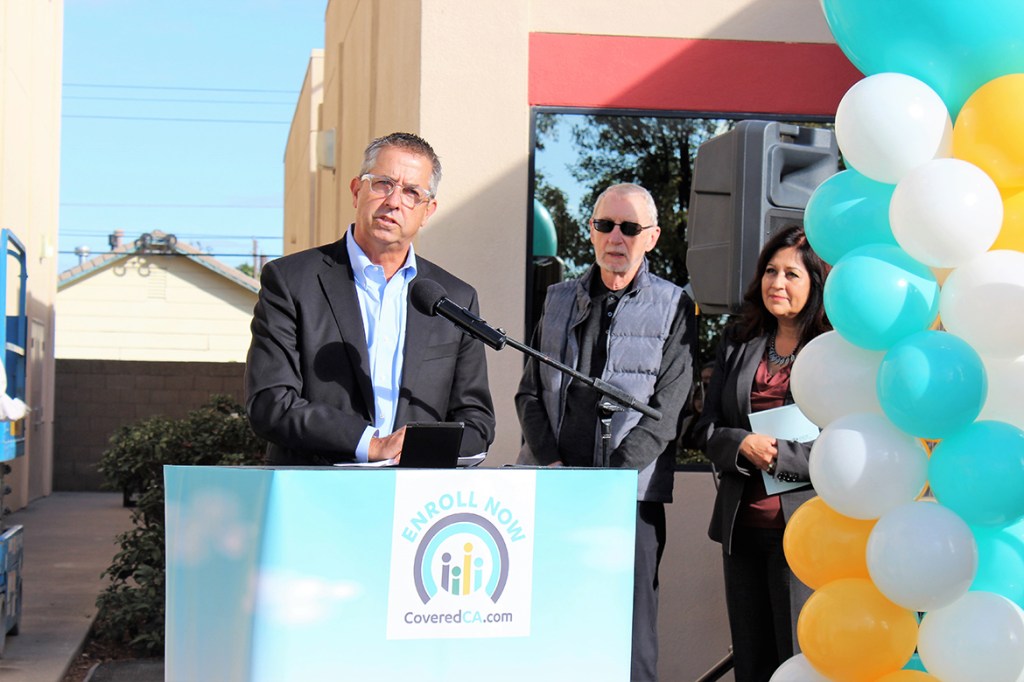Covered California’s premiums are expected to rise significantly next year, but the head of the state’s insurance exchange said the Trump administration’s legal bid to dismantle protections for people with preexisting medical conditions will likely not contribute to the increases.
Health plans will only be “pricing for the changes that they can absolutely see,” Peter Lee, executive director of the agency, told California Healthline on Wednesday. And because the legal challenge will take time to work its way through the courts, California will have “an opportunity to implement state protections” should they be needed, Lee said.
In fact, Californians would already be temporarily cushioned by existing state rules that protect people with preexisting conditions for 12 months if that portion of the Affordable Care Act is struck down. The preexisting conditions clause prohibits insurers from refusing coverage to people with prior illnesses, or charging them more because of it. Lee is expected to address the matter at a Covered California board meeting later today.
Last week, the administration announced it would not defend the key pillars of the ACA in court. It argued that those provisions, including the health law’s protection for people with preexisting conditions, should be declared unconstitutional.
One federal health care move that will factor into Covered California’s 2019 premiums, Lee said, is the decision by Congress to eliminate the tax penalty on people who choose not to buy insurance starting next year.
Many experts believe that without any consequences for not having insurance, more young and healthy people will decide to forgo it, leaving health plans with a higher concentration of elderly and ill — and more expensive — people.
The repeal of the tax penalty could add 1.7 million Californians to the ranks of the uninsured by 2027, according to the University of California-Berkeley Labor Center.
Covered California, which currently provides coverage for about 1.5 million people, last month unveiled preliminary projections showing that its health plan rates could spike about 11 percent on average next year, in tandem with an enrollment drop of about 12 percent. The elimination of the tax penalty accounts for more than half the projected premium spike, according to Covered California’s analysis.
But actual premiums have not been set yet. Covered California is still negotiating with insurance companies and is expected to announce 2019 rate increases, and the lineup of participating insurers, next month.
The premium increases in question apply only to health plans covering the approximately 2.3 million people — about 5.8 percent of the state’s population — who buy health insurance either through Covered California or the private individual market outside the exchange. Most Californians, like most Americans, get their health coverage through an employer or a government program such as Medicare or Medicaid.
Despite Lee’s prediction, some observers believe that Trump’s legal assault on the preexisting conditions rule will intensify tumult in the industry, making it more difficult for insurers to make well-informed business decisions for next year.
“Insurers are going to have an extremely difficult time projecting rates for 2019 given this degree of uncertainty,” said Gerald Kominski, director of the UCLA Center for Health Policy Research. He said the impact on “California’s marketplace would be complicated.”
Nationally, premiums in the individual market, including health plans sold both on and off government-run insurance exchanges, are expected to rise about 10 percent annually in most years through 2027, propelled by the elimination of the penalty, according to an analysis by the Congressional Budget Office.
The average premium hikes in some states could be even higher: Washington state’s exchange recently projected an average rate hike of 19 percent, and New York estimates an average increase of 24 percent, with about half of that rise attributed to the repeal of the tax penalty. But officials in both states caution that these are preliminary proposals and final rates may be different.
The good news is that most people who buy their insurance through state-run exchanges, or the federal one, will not feel the bite of the higher premiums. That’s because nearly 90 percent of exchange customers get federal tax credits to offset the cost of their premiums, and the amount of those credits rises as premiums do. However, higher-income enrollees, who don’t qualify for financial assistance, will bear the brunt of the premium hikes, said James Scullary, a Covered California spokesman.
Whatever the final rate increase, it will only be a statewide average, meaning rates will vary — as they always do — by geography, age, insurer and the level of coverage you purchase. California’s Central Coast communities, for example, have seen higher-than-average premium increases in recent years than other regions of the state.
The extent to which the expected decline in Covered California enrollment will affect the stability of the exchange remains to be seen.
As younger, healthier people drop coverage, leaving a costlier insurance pool, insurers could decide at some point that it’s no longer worthwhile to stay.
There’s plenty of precedent for that: UnitedHealth Group terminated individual coverage in California last year — both on and off the exchange — blaming “smaller overall market size” and a “higher-risk profile.” Anthem pulled out of most of California’s individual market this year, citing changing federal rules and an “increasing lack of predictability.”
Anthem blamed its decision in part on uncertainty over whether the Trump administration would maintain subsidies that help reduce medical costs for some low-income individuals. The administration ultimately stopped funding those subsidies, a decision that contributed to this year’s rate increases.
Covered California sees marketing and outreach as countermeasures to federal policies that weaken the ACA, and it budgeted a whopping $111 million for them this year. While waiting for the outcome of factors beyond its control, “we will do everything we can to remind Californians that to go without insurance is a bad gamble,” Lee said.


